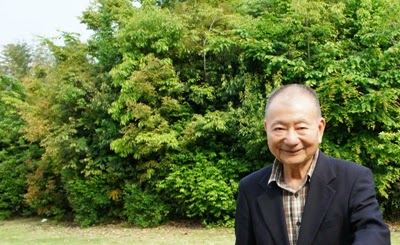
On my quest I ran into Elise and James. Creators of the Sugi Project with the aim to give the earth back a piece of its wild plumes by investing in forests.
James Godfrey-Faussett is the chief forester on duty.
They use the Miyawaki method. During my conversation with him it was clear that this method is very strict. Indigenous species are assumed and that’s just a little less exotic than how Robert Hart, the food forest pioneer, viewed things. He experimented with many exotic species. Will certainly be continued.
But with the Miyawaki method you can accelerate the forest creation enormously.
James took the liberty of putting a few things on paper for us.
It makes you think.
“Our Celtic ancestors were masters of foraging, James said, and would use their native forests as we now use supermarkets! They understood the balance and complexity of the various food systems and even left enough for squirrels to feed and bury as this would lead to the regeneration of vital trees, such as Oak. The Celts learned to harvest acorns (to make flour) from Sessile Oak trees that grew next to the ash trees, because the ash absorbed soil-based calcium that would otherwise make the acorns tannic and bitter. They also harvested young leaves as we would now with vegetables and salad.
Much of this ancient and practical knowledge has been lost; yet it remains unconsciously buried within us. More than ever, people are now looking at the healing aspects of nature and the joy and empowerment of growing your own food. Ultimately, our immune systems are strengthened by contact with nature and trees; even more concerning, however, is how weakened we are physically, spiritually, and emotionally by the divorce. Much of this seems to indicate that people and communities are hungry to become more self-sufficient and less dependent on other external sources for food and health.
In Belgium Luc Schuiten is a big fan of this method. The project in Péruwelz is a good example of this.
What better way to put all these aspects together than creating a community-level wild food forest!
The instinctual fear that a food forest is complicated and may not succeed is understandable given our disconnection from nature. But this is unfounded; nature is very good at growing and blooming when properly nurtured.
The Miyawaki method of afforestation is a 100% natural way to create dense forest teeming with biodiversity. SUGi is now pioneering this method of forest creation in Europe and around the world. Complex and full of subtleties, a Miyawaki forest takes time to create, but the results are enlightening – a self-sustaining dense forest area that is maintenance-free after just a few years. Our SUGi Urban Forests start from just a few meters through and up to acres. Regardless of size, the process remains the same.
We are able to create wild urban forests using the Miyawaki method as the trees are left to settle and grow as nature intended. That is why we call the food forests wild – they only contain the true native trees and so even the apple and most fruit trees will not be included because they come from nature too early.
This may sound surprising, but it boils down to biodiversity. It takes hundreds of thousands of years for a tree and its web of biodiversity to become ‘friends’. Trees emit all kinds of natural chemicals for various reasons that insects, fungi and biology must adapt to. Bring in a non-native tree and the local ecology and biodiversity will find it poisonous and move away, then an imbalance of aggressive trunks will move and often disease will ensue.
Creating a wild food forest allows you to harvest health-giving, interesting wild fruits and nuts from trees that are quickly becoming self-sufficient and creating enormous biodiversity. In fact, the forest’s pockets look good and produce beautiful blossoms in the spring, creating a valuable urban food source and a haven for bees and pollinators. Let’s not forget the birdsong. Imagine waking up to the sounds of chirping happily. Many birds only sing when they feel calm and safe. When you listen to them, our bodies respond in kind.
Get to know the locals!
The Woodland Trust is the ‘guardian angel’ of the native plate species.
This is a list of native fruit and nut trees for a recent native wild food forest SUGi is planting in the UK.
Blackthorn – ‘ Prunus spinosa ‘
Small purple ‘ Prunus domestica ‘ – the bitter plum
Elderberry ‘ Sambucus’ – the fruit and flowers
Rowan ‘ Sorbus aucuparia ‘ – the berries
Hazel ‘Corylus’ – the nuts
Sessile oak ‘ Quercus petraea ‘ , – the acorns
Beech ‘ Fagus sylvatica ‘ – the mast and leaves
Crab apple ‘Malus sylvestris’ – the wild apples
Wild cherries’ Prunus avium – the cherries
Hawthorn ‘ Rataegus monogyna ‘ – the berries and leaves
Wild berries ‘ Prunus avium ‘ – the berries
Raspberries ‘ Rubus idaeus ‘ – the fruit
Wood strawberries ‘Fragaria vesca L.’ – fruit
Cranberries ‘Vaccinium oxycoccos’ -fruit
Blackberries ‘ Rubus fruticosus ‘ – fruit
Roses ‘ Rosa canina ‘ – the rose hips
James Godfrey-Faussett
SUGi Lead Forest Maker & Project Manager